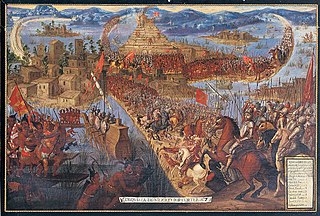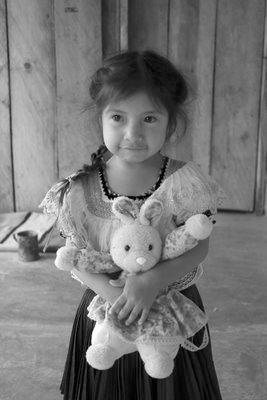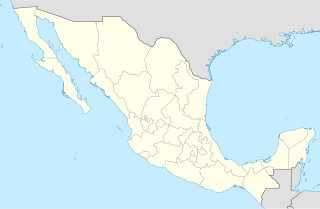Votan is a legendary or mythological figure mentioned in early European accounts of the Maya civilization.
The Huastec or Téenek, are an indigenous people of Mexico, living in the La Huasteca region including the states of Hidalgo, Veracruz, San Luis Potosí and Tamaulipas concentrated along the route of the Pánuco River and along the coast of the Gulf of Mexico.

The Mayan languages form a language family spoken in Mesoamerica and northern Central America. Mayan languages are spoken by at least 6 million Maya peoples, primarily in Guatemala, Mexico, Belize and Honduras. In 1996, Guatemala formally recognized 21 Mayan languages by name, and Mexico recognizes eight more within its territory.
Overton Brent Berlin is an American anthropologist, most noted for his work with linguist Paul Kay on color, and his ethnobiological research among the Maya of Chiapas, Mexico.
Johannes is a Medieval Latin form of the personal name that usually appears as "John" in English language contexts. It is a variant of the Greek name (Ιωάννης) and Classical Latin (Ioannes), itself derived from the Hebrew name Yehochanan, meaning "Yahweh is gracious". The name became popular in Northern Europe, especially in Germany. Common German variants for Johannes are Johann, Hans, Hannes, Jens and Jan. In the Netherlands, Johannes was without interruption the most common masculine birth name until 1989. Jan is known in Catalan, Czech, Slovenian, Dutch, Scandinavian, Cornish, German, Afrikaans and Northern Germanic. Polish has its own variant Janusz as has Slovenian "Janez". Common English variants for Johannes are John or Johnny. There are also variants of the name in other languages:
Tojolabal is a Mayan language spoken in Chiapas, Mexico. It is related to the Chuj language spoken in Guatemala. Tojolabal is spoken especially in the departments of the Chiapanecan Colonia of Las Margaritas by about 20,000 people.

Health and medicine among the ancient Maya was a complex blend of mind, body, religion, ritual and science. Important to all, medicine was practiced only by a select few, who generally inherited their positions and received extensive education. These shamans acted as a medium between the physical world and spirit world. They practiced sorcery for the purpose of healing, foresight, and control over natural events. Since medicine was so closely related to religion, it was essential that Maya medicine men had vast medical knowledge and skill. It is known that the Maya sutured wounds with human hair, reduced fractures, and were even skilled dental surgeons, making prostheses from jade and turquoise and filling teeth with iron pyrite.
Terrence Kaufman is an American linguist specializing in documentation of unwritten languages, lexicography, Mesoamerican historical linguistics and language contact phenomena. He is emeritus professor of the department of anthropology at the University of Pittsburgh.

The Roman Catholic Archdiocese of Tuxtla is a Metropolitan Archdiocese based in Tuxtla, Chiapas, Mexico. It is responsible for the suffragan dioceses of Tapachula and Las Casas. Benedict XVI elevated it to the level of archdiocese on 25 November 2006.

Amatenango del Valle is a town and one of the 122 municipalities of Chiapas, in southern Mexico. It covers an area of 236 km2 (91 sq mi).

Chenalhó is a town and one of the 119 municipalities of Chiapas, in southern Mexico. It covers an area of 113 km².
The Tzeltal are a Maya people of Mexico, who chiefly reside in the highlands of Chiapas. The Tzeltal language belongs to the Tzeltalan subgroup of Maya languages. Most Tzeltals live in communities in about twenty municipalities, under a Mexican system called “usos y costumbres” which seeks to respect traditional indigenous authority and politics. Women are often seen wearing traditional huipils and black skirts, but men generally do not wear traditional attire. Tzeltal religion syncretically integrates traits from Catholic and native belief systems. Shamanism and traditional medicine is still practiced. Many make a living through agriculture and/or handcrafts, mostly textiles; and many also work for wages to meet family needs.

The Mexican Indian Wars were a series of conflicts fought between Spanish, and later Mexican, Guatemalan, Honduran, Salvadoran and Belizean forces against Amerindians in what is now called Mexico and surrounding areas such as Belize, Guatemala, Honduras, El Salvador and Southern/Western United States. The period begins with Spanish conquest of the Aztec Empire in 1519 and continued until the end of the Caste War of Yucatán in 1933.
Radio Insurgente is the official voice of the Zapatista Army of National Liberation (EZLN).The radio station has been operating since August 2003 and it is independent from the Mexican government. Its broadcasting location is unknown. Radio Insurgente's content is focused on promoting the ideas and struggles of the Zapatista movement. Radio Insugente transmits programs in Spanish and in the indigenous languages tzotzil, tzeltal, chol and tojolabal. According to their website, they transmit "from various places in Chiapas directed to the Zapatista bases, the insurgentes and milicians, the commanders and local people in general". No new programs have been posted on the website since 2009, but CDs are on sale on the site and users can listen to previous content. Some argue that Radio Insurgente broadcasts daily on the FM dial — "an hour long short-wave program Friday afternoon at 3:00 PM Zapatista time to the rest of the world"
The ChʼolanAKACholan–Tzeltalan languages are a branch of the Mayan family of Mexico. These languages break into six sections being Cholan and Tzeltalan. Cholan has then two subsections being Western Cholan and Chʼoltiʼan; these composing the two larger sections of slight linguistic differences portrayed by Kuryłowicz's Fourth Law of Analogy. The language Tzeltalan also breaks up into sections; Tzendal, Tzotzil, and Wastekan. These subsections differ by similar linguistic differences.
In 1712, a number of Maya communities in the Soconusco region of Chiapas rose in rebellion, in what is known as the Tzeltal Rebellion or Tzendal Rebellion. It was a multiethnic revolt, with 32 towns of Tzeltal (14), Tzotzil (15), and Chol (3) indigenous peoples participating in it. The indigenous renounced the authority of the Catholic hierarchy and established a priesthood of indigenous men. There was widespread military mobilization of indigenous men, who called themselves “soldiers of the Virgin.”
Prunus lundelliana, Spanish: taquicui, and nail wamal in the Tzeltal language, is a species of Prunus native to southern Mexico and to northern Central America. It is a tree reaching 10 m. It is a common understory species in montane cloud forests, preferring to grow on the sides of streams. It resembles Prunus tetradenia, but with significantly smaller leaves, and in the position of certain of the leaf glands. The wood is dense and darkly colored. The white 4 to 6 mm flowers are borne on axillary racemes. The fruit, a drupe, is black, 8 to 10 mm, with very little flesh.



















